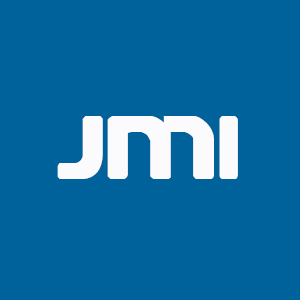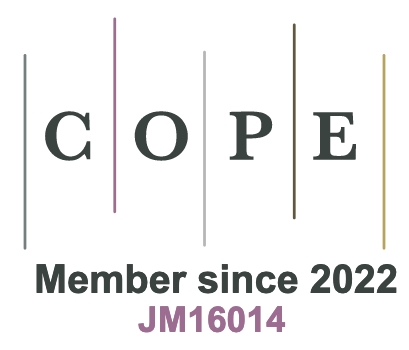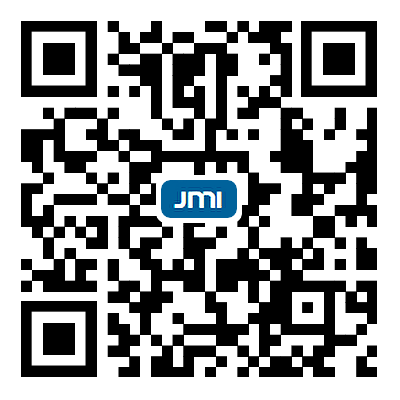Structure-property modeling scheme based on optimized microstructural information by two-point statistics and principal component analysis
Abstract
Construction of the structure-property (SP) relationship is an important tenet during materials development. Optimizing microstructural information is a necessary and challenging task in understanding and improving this linkage. To solve the problem that the experimental microstructures with a small size usually fail to represent the entire sample structure, a data-driven scheme integrating two-point statistics, principal component analysis, and machine learning was developed to reasonably construct a representative volume element (RVE) set from the small microstructures and extract optimized structural information. Based on the elaborate quantitative metrics and method, this kind of RVE set was successfully constructed on an experimental microstructure dataset of ferrite heat-resistant steels. Moreover, to remove redundant information included in two-point statistics, the critical threshold of the tolerance factor related to the coherence length in microstructures was determined to be 0.005. An accurate SP linkage was finally established (mean absolute error < 6.28 MPa for yield strength). This scheme was further validated on two other simulated and experimental datasets, which proved that it can offer scientific nature, reliability, and universality compared to traditional strategies. This scheme has a bright application prospect in microstructure classification, property prediction, and alloy design.
Keywords
INTRODUCTION
A great acceleration in target prediction and alloy design can be realized through materials informatics including multitudinous advanced data-driven technologies and theories related to materials science, which has received extensive attention in recent years[1-3]. Establishing process-structure-property (PSP) linkages represents a recognized core task for achieving this ambitious goal. Indeed, significant efforts have been made to pursue such an accurate and universal linkage[3-5].
Traditionally, materials development is largely completed by a mix of Edisonian approaches and serendipity, which can extract experiential process-property (PP) relationships from existing experimental data, and then studies to understand and explain the dominant mechanism leading to the expectations or serendipity through investigating microstructural features[6]. Using an informatics strategy that is different from the traditional experiment methods simply guided by physical metallurgy knowledges, we previously demonstrated the improvement effect of microstructural information in predicting the hardness of austenite steels by comparing PP and PSP linkages[7]. Similarly, Molkeri et al. proposed a novel microstructure-aware framework for materials design and rigorously confirmed the importance of microstructure information in alloy design[8]. One can find that the focus of attention on microstructure has gradually shifted from providing scientific explanations to practically promoting the forward and reverse process of PSP. Therefore, it is necessary to quantificationally extract microstructure information[9-13]. Generally, some physical parameters based on statistical average (phase fraction, grain size, etc.) are used to simply characterize the microstructural features of materials, which nevertheless ignores the correlation and heterogeneity of these features in terms of spatial distribution. In addition, considering the entire discrete and highly nonlinear micrograph data as partial input of a PSP linkage, one may be at risk of dimensional disaster due to the inapplicability of some common dimension reduction algorithms[14]. Therefore, a challenge to be addressed is how to extract sufficient and effective microstructure information including correlation and heterogeneity of spatial features in a quantitative and low-dimensional manner.
Some admirable efforts have been made to overcome this challenge. Sangid et al. used crystal plasticity simulations to identify the stress concentration around pores of various sizes and quantify the pore with the smallest size that results in a debit in the fatigue performance of IN718 alloy[15]. Zinovieva et al. proposed a multi-physics methodology combining physically based cellular automata to simulate the grain structure evolution[16]. They successfully uncovered the effects of scanning pattern on the microstructure and elastic properties of 316L austenitic stainless steel prepared by powder bed-based additive manufacturing. It is noted that, although the two works mentioned above used advanced simulation methods to investigate the PSP relationship, the high computational cost and high-dimensional data analysis process were not completely avoided. Popova et al. developed a data-driven workflow and applied it to a set of synthetic AM microstructures obtained using the Potts-kinetic Monte Carlo (kMC) approach[17]. They finally correlated process parameters in the kMC approach with the predicted microstructures. The chord length distributions method used in their workflow addresses the quantification of the grain size and shape distributions and their anisotropy in a microstructure. However, other important microstructural features, such as the volume fraction of the phase of interest, fail to be extracted by this method[18-21]. Fortunately, Fortunately, a rigorous quantitative framework based on the
The effective information of two-point statistics is compressed in the central area after centralized transformation, leading to the statistics of an RVE containing a great deal of redundancy in the area with a large length of
where
Principal component analysis (PCA)[38], a popular dimensionality reduction algorithm, can effectively address the above challenge of high-dimensional data and has been widely applied to many fields, such as grain coarsening[39], microstructure evolution during creep[31], nonmetallic inclusions in steels[37], etc. Interestingly, one can project statistical features of microstructures into a PCA space and compare them using some common distance metrics such as Euler distance[40-43], which provides a potential solution for optimizing microstructural information by constructing an RVE set and removing redundancy. More importantly, low-dimensional features of microstructures obtained by PCA can be input into machine learning (ML) models to establish high-fidelity PSP linkages[13, 44-48].
In the present study, we developed a new scheme to build a more reliable structure-property (SP) linkage by optimizing microstructural information, which can be extended to a higher-ordered PSP linkage in the future. Taking an example of ferrite heat-resistant steels, we performed a series of experiments and built a small dataset. This kind of steel has become one of the main materials for the heavy and thick components of advanced ultra-supercritical (A-USC) power plants due to its high thermal diffusivity and low cost[49]. Significant efforts have been made to understand the SP linkage and improve mechanical properties at a high temperature (650 ℃) for the steels[50-53]. Using PCA and two-point statistics, we propose a new method and metric to construct an RVE set from the small SVEs of the steels. We also explored the effect of different redundancy-truncation levels of two-point statistics on the established ML model and determined the acceptable threshold of the tolerance factor
MATERIALS AND METHODS
Materials preparation
Five alloys were prepared using the raw metals with purity higher than 99.99% by smelting, followed by casting into ingots of
Nominal chemical compositions and yield strength (
| Label | Mn | Ni | Al | Ti | Mo | W | |
| Alloy 1 | 1.06 | 2.64 | 0.80 | 0.24 | 0.08 | 0.04 | 254 |
| Alloy 2 | 0.96 | 3.20 | 1.12 | 0.08 | 0.24 | 0.08 | 299 |
| Alloy 3 | 1.54 | 3.04 | 1.20 | 0.08 | 0 | 0.32 | 276 |
| Alloy 4 | 0.60 | 3.12 | 1.12 | 0.08 | 0.32 | 0 | 336 |
| Alloy 5 | 1.44 | 2.56 | 1.20 | 0 | 0.04 | 0.52 | 325 |
Data preprocessing
All microstructures were binarized by an image processing technique named Otsu's threshold processing[55]. This technique is a nonparametric and unsupervised method of automatic threshold selection for picture segmentation. It selects a threshold automatically from a gray level histogram, and the threshold is equal to the one specific pixel value
Figure 1. Experimental microstructures and corresponding binary results for Alloy 1. The magnification of the microscope and the number of microstructures at each magnification is listed at the top, while the grid number is given at the bottom.
To eliminate the impact of data magnitude differences on the performance of the model, before establishing the SP linkage by a ML model, all of the microstructural features (low-dimensional representativeness of the microstructures)
Extracting microstructural information
The circular sample, as displayed in Figure 2A, may rotate during OM characterization, leading to inconsistent statistics of the same microstructure in different reference frames. To filter out the dependence of the statistics on the observer reference frame, we employed rotationally invariant two-point statistics (RI2SS) to capture the important structural details[23]. For a certain local state
Figure 2. Example of a microstructure and corresponding autocorrelations: (A) schematic diagram of sample preparation; (B) binarized micrograph; (C) autocorrelations of the black phase; and (D) enlarged drawing of the central domain in (C) labeled by the dotted black circle.
where
PCA was used to reduce the dimensionality of autocorrelations. One can obtain principal component scores (PCs), i.e., low-dimensional features of a microstructure, through projecting its autocorrelations into a new space supported by several orthogonal basis vectors. The vectors are ordered and selected according to their explained variance that reflects the main variation of the samples. Mathematically, the original autocorrelations can be reconstructed by
where
Modeling and evaluation
We used a classical ML regression model, Ridge regression[57], to build the SP linkage. By imposing the penalty
where
The performance of these models was quantified by root mean square error (
SCHEME
We propose a data-driven scheme for building SP linkage including five modularity: dataset preparation, data preprocessing, microstructural information extraction, microstructural information optimization, and SP linkage construction [Figure 3]. All parameters and corresponding explanations are listed in Table 2. The details of applying this scheme to the Ferrite steels are as follows:
Figure 3. Scheme of optimizing microstructural information and constructing SP linkage. Note that the arrows with a colored filling point to the modeling path of SP linkage, and the arrow with dotted lines represents that the ML modeling is also used to determine the optimized
Parameters used in this study and corresponding explanation list
| Parameters | Explanation |
| Random vector thrown into a microstructure | |
| Local state of interest (austenite phase and ferrite phase in our case) | |
| One-point statistics of local state | |
| Cell node indexed the spatial domain of a microstructure | |
| The total number of valid trials associated with discrete vector | |
| Microstructure function representing the volume fraction of local state | |
| Two-point cross-correlation statistics of local state | |
| Two-point autocorrelation statistics of local state | |
| Coherence length of a realistic structure | |
| Tolerance factor related to redundant information in two-point statistics. | |
| The number of a microstructure sample or two-point statistics in a set | |
| The number of all two-point statistics in a set | |
| Pixel value in a digital microstructure | |
| Inputted feature array of the ML model | |
| Outputted property array of the ML model | |
| Predicted property of the | |
| The average property of the samples | |
| Mean of inputted features | |
| Variance of inputted features | |
| Yield strength at 650 ℃ | |
| The coefficients of | |
| The complexity parameter that controls the amount of shrinkage in Ridge model | |
| The | |
| The | |
| The ensemble average of the two-point statistics | |
| The dimensionality of the two-point statistics | |
| The experimental dataset in this study | |
| The set of true size of the SVEs, i.e., | |
| The optimal size of the SVEs in an RVE set | |
| The set of the number of SVEs with different sizes, i.e., | |
| The optimal number of the SVEs in an RVE set | |
| The number of randomly selected samples in the subset, here | |
| The number of primary grains in the PFM model | |
| Anisotropy coefficient of the solid-liquid interfacial energy in PFM model | |
| Nucleation supercooling in PFM model | |
| Pair correlation function of a microstructure | |
| Root-mean-square error between the two-point statistics of each SVE and the target ensemble-averaged statistics |
1) Creating experimental dataset
2) Preprocessing microstructure and property data by Otsu's threshold processing and normalization operation mentioned above.
3) Extracting quantitative information of all microstructures by RI2SS.
4) Optimizing microstructural information to represent the structural features in the whole sample for each alloy. This procedure includes two sub-paths labeled by the colored arrows in the orange box in Figure 3:
a) Constructing RVE set (confirming the size and number of the included SVEs). We randomly selected different numbers
where
We also propose a novel method called "recursive addition" to confirm the optimal number
b) Removing redundant information of the autocorrelations. We truncated the autocorrelations in the constructed RVE set by controlling the different maximum lengths of
5) Establishing SP linkage. By inputting the low-dimensional features of the RVEs for the five alloys, we trained a Ridge regression model and assessed its accuracy in predicting yield strength. It is noted that this process was also used to validate the reliability of the methods proposed in Procedure (4).
This scheme shown in Figure 3 was also performed on the dendrite solidification data from PFM for Al-Cu alloys and experimental data of Ni-Fe-based superalloys. The reliability and generalization ability of the scheme were also considered in this study.
RESULTS
Construction of RVE set
Following the workflow shown in Figure 3, we traversed all possible combinations with the variation of
Figure 4. The distribution of the averaged autocorrelations of a certain number SVEs in the PCA space. The PCs are grouped into five clusters that are distinguished by the size
To quantify the interclass and intraclass convergence observed above, we used Equation (5) and (6) to calculate the normalized average distances,
Figure 5. Evaluation of convergence and reliability of ensemble averaged autocorrelations: (A) schematic diagram of evaluation metrics,
As for the volume of the RVE set, we propose a novel method named recursive addition based on Euler distance in the PCA space. Figure 6B explains the rationality of the method by using a defined distance,
Construction of structure-property linkage
We then employed Ridge regression to extract SP linkage. The inputs of the model are the low-dimensional features (
Figure 7. Distribution of the alloys #1-#5 in the PCA space and prediction accuracy (
To verify the generalization ability of the proposed method in constructing the RVE set, we performed this method on a dataset of dendrite solidification of Al-Cu alloys simulated by PFM[59-63]. The parameters of PFM are listed in Table S1. The dataset includes 48 microstructures that are produced by controlling solidification parameters including the number of primary grains (
Identification of Redundant statistics
Two-point statistical autocorrelations contain valuable information concentrated in the central area and vast redundant information in the peripheral area. Following the procedures shown in Figure 3, we truncated the autocorrelations of the microstructures in the RVE set, as displayed in Figure 8A. The maximum modulus of the vector
Figure 8. Variation of autocorrelations and PC variance with different lengths of
While removing redundancy in statistical autocorrelations, the distribution of the SVEs in the RVE set in the PCA space was also altered, as shown in Figure S6. When
Figure 9. Variation of intraclass variance, interclass variance and
Improvement of structure-property linkage
Tolerance factor
By calculating pair correlation function (PCF) of the average autocorrelations in the RVE set, we modified the left-hand side of Equation (1) as
Figure 10. Variation of
Using the autocorrelations with different
We further employed the procedure in Figure 3 on a Ni-Fe-based superalloy dataset to explore the impact of redundancy removement on the accuracy of SP linkage and the threshold
DISCUSSION
Advantages of the quantitative metrics based on PCA
Quantitative comparison between two microstructures has always been a fascinating issue. To complete this task, Niezgoda et al. developed a metric
Our proposed quantitative metrics based on PCA successfully overcome the defects above. From Equation (5) - (7), we can find that the metrics are distance measurement between the low-dimensional features
In summary, the differences between our metrics and
Advantages and limitations of the method of optimizing microstructural information
Optimization of microstructural information in this study includes two aspects: construction of RVE set and removement of redundancy. There are two premises for an RVE set: (1) the size of members is large enough to ensure statistical homogeneity in the spatial distribution of structural features that can be mapped to macroscopic mechanical properties; and (2) the dispersion of structural features in the RVE set should match the entire material sample[28]. The microstructures contained in the RVE set are independent of their size and location in the samples [Figure 4 and 5], which meets the first condition. The RVE set absorbs enough structural features that its average autocorrelations converge in PCA space [Figure 6], indicating the second condition has been met. In addition, the method was successfully applied to the datasets of experimental ferrite steels, dendrite solidification of Al-Cu alloys simulated by PFM and experimental Ni-Fe-based superalloys collected in the literature, and SP linkage with high precision was established by Ridge regression. These impressive results demonstrate the advantages of scientific nature, reliability, and universality.
The developed method is an improved version of the average approximation method to construct an RVE set, which is also not readily applicable to the samples with microstructure gradients, for instance, some additively manufactured samples with coarse columnar grains where the "average grain size" characteristic is meaningless[64], the samples with high inhomogeneity in size or distribution of the thermodynamic phases where the average treatment loses the local variation nature of the structure[65], and so on. A rough solution to obtain the statistical information of the overall sample from the SVEs with local gradients is reserving all the original two-point statistics of the SVEs. Nevertheless, dimensional disasters are beyond the scope of conventional dimensionality reduction algorithms, such as PCA. If one insists on extracting two-point statistics of the sample by ensemble averaging the statistics from multiple SVEs, the long-range correlations may be missed. In other words, the SVEs size used to construct an RVE set must exceed the coherence length of the microstructure when the long-range order plays a significant role in the physics of the system[28]. Therefore, the construction of RVE for the samples with microstructure gradients or inhomogeneity remains a challenging task, which is one of the active areas that we will investigate in the future.
Another interesting topic in this study is the tolerance factor
Application prospects and limitations for the proposed scheme
In the practical application of the proposed scheme, flexible feature selection is allowed, such as the addition of other necessary factors in addition to the low-dimensional PC features of microstructures. The factors here can be directly measured from the material samples or filtered by feature engineering. The factors that may be important to the yield strength (grain size, precipitated phase, dislocation, etc.) were indeed ignored in our study, resulting in a seemingly "capped" predictability of the final model even with the optimized parameter selection, i.e.,
A major strength of the proposed scheme comes from its ability to extract reliable low-dimensional features by optimizing structural information in an RVE set. Using the features, one can place the microstructures into correct classes by flexibly combining supervised or semi-supervised ML algorithms to study the relationship between structural features and resulting properties for a special material system such as Ag-Al-Cu ternary eutectic alloys or superalloys with multiple strengthening patterns[40, 43, 68]. Therefore, the scheme can accelerate and improve the procedure of microstructure classification. In addition, our previous study proved that introducing two-point statistical information on microstructures can enhance PSP linkages, which may be further improved by the scheme in this study[7]. We believe that it is competent to predict mechanical properties for most material systems, especially in the case of long-term service in a harsh experimental environment[31-33]. Unfortunately, to our best knowledge, there is no effort to apply two-point statistical information to realize the goal of alloy design. Molkeri et al. proved that explicit incorporation of microstructure knowledge in the materials design framework can significantly enhance the materials optimization process[8], and we previously developed an iterative strategy to search ultra-strength martensitic stainless steels in a global-oriented manner[48]. These two studies provide confidence that our scheme [Figure 3], combined with the previously proposed iteration strategy, can be applied to rapidly discover new alloys in experiments. In conclusion, there is a broad application prospect of our scheme in microstructure classification, property prediction, and reverse engineering for designing new materials.
CONCLUSIONS
We propose a novel scheme to construct SP linkage by optimizing microstructure information, which is achieved via employing RI2SS, PCA, and Ridge regression. A small experimental dataset for ferrite steels was created. We designed reliable and robust distance metrics,
DECLARATIONS
Authors' contributions
Conception and design of the study: Hu X, Li J, Wang J
Data analysis, visualization, and interpretation: Hu X, Zhao J, Wang J
Method design and modeling: Hu X, Wang J
Materials preparation: Hu X, Chen y, Zhao J, Wangm Y, Wu Q
Writing: Hu X, Li J, Wang Z, Wang J
Review and editing: Li J, Wang Z, Wang J
Resources, supervision, and project administration: Li J, Wang J
Availability of data and materials
Supplementary materials are available from the Journal of Materials Informatics or from the authors.
Financial support and sponsorship
This work was supported by the National Natural Science Foundation of China (Grant No. 51871183 and 51874245). The authors also thank the High-Performance Computing Center of Northwestern Polytechnical University, China, for the computer time and facilities.
Conflicts of interest
The authors declared that there are no conflicts of interest.
Ethical approval and consent to participate
Not applicable.
Consent for publication
Not applicable.
Copyright
© The Author(s) 2022.
Supplementary Materials
REFERENCES
2. Hart GLW, Mueller T, Toher C, Curtarolo S. Machine learning for alloys. Nat Rev Mater 2021;6:730-55.
3. Agrawal A, Choudhary A. Perspective: materials informatics and big data: realization of the "fourth paradigm" of science in materials science. APL Mater 2016;4:053208.
4. Kalidindi SR, Niezgoda SR, Salem AA. Microstructure informatics using higher-order statistics and efficient data-mining protocols. JOM 2011;63:34-41.
5. Kalidindi SR, De Graef M. Materials data science: current status and future outlook. Annu Rev Mater Res 2015;45:171-93.
6. Arróyave R, Mcdowell DL. Systems approaches to materials design: past, present, and future. Annu Rev Mater Res 2019;49:103-26.
7. Hu X, Li J, Wang Z, Wang J. A microstructure-informatic strategy for Vickers hardness forecast of austenitic steels from experimental data. Materials & Design 2021;201:109497.
8. Molkeri A, Khatamsaz D, Couperthwaite R, et al. On the importance of microstructure information in materials design: PSP vs PP. Acta Materialia 2022;223:117471.
9. Khatavkar N, Swetlana S, Singh AK. Accelerated prediction of Vickers hardness of Co- and Ni-based superalloys from microstructure and composition using advanced image processing techniques and machine learning. Acta Materialia 2020;196:295-303.
10. Shen C, Wang C, Wei X, Li Y, van der Zwaag S, Xu W. Physical metallurgy-guided machine learning and artificial intelligent design of ultrahigh-strength stainless steel. Acta Materialia 2019;179:201-14.
11. Shin D, Yamamoto Y, Brady M, Lee S, Haynes J. Modern data analytics approach to predict creep of high-temperature alloys. Acta Materialia 2019;168:321-30.
12. Peng J, Yamamoto Y, Hawk JA, Lara-curzio E, Shin D. Coupling physics in machine learning to predict properties of high-temperatures alloys. npj Comput Mater 2020:6.
13. Hu X, Wang J, Wang Y, et al. Two-way design of alloys for advanced ultra supercritical plants based on machine learning. Computational Materials Science 2018;155:331-9.
14. Niezgoda SR, Kanjarla AK, Kalidindi SR. Novel microstructure quantification framework for databasing, visualization, and analysis of microstructure data. Integr Mater Manuf Innov 2013;2:54-80.
15. Sangid MD, Ravi P, Prithivirajan V, Miller NA, Kenesei P, Park J. ICME approach to determining critical pore size of IN718 produced by selective laser melting. JOM 2020;72:465-74.
16. Zinovieva O, Romanova V, Balokhonov R. Effects of scanning pattern on the grain structure and elastic properties of additively manufactured 316L austenitic stainless steel. Materials Science and Engineering: A 2022;832:142447.
17. Popova E, Rodgers TM, Gong X, Cecen A, Madison JD, Kalidindi SR. Process-structure linkages using a data science approach: application to simulated additive manufacturing data. Integr Mater Manuf Innov 2017;6:54-68.
18. Yabansu YC, Rehn V, Hötzer J, Nestler B, Kalidindi SR. Application of Gaussian process autoregressive models for capturing the time evolution of microstructure statistics from phase-field simulations for sintering of polycrystalline ceramics. Modelling Simul Mater Sci Eng 2019;27:084006.
19. Latypov MI, Kühbach M, Beyerlein IJ, et al. Application of chord length distributions and principal component analysis for quantification and representation of diverse polycrystalline microstructures. Materials Characterization 2018;145:671-85.
20. Turner DM, Niezgoda SR, Kalidindi SR. Efficient computation of the angularly resolved chord length distributions and lineal path functions in large microstructure datasets. Modelling Simul Mater Sci Eng 2016;24:075002.
21. Yucel B, Yucel S, Ray A, Duprez L, Kalidindi SR. Mining the correlations between optical micrographs and mechanical properties of cold-rolled HSLA steels using machine learning approaches. Integr Mater Manuf Innov 2020;9:240-56.
22. Niezgoda S, Fullwood D, Kalidindi S. Delineation of the space of 2-point correlations in a composite material system. Acta Materialia 2008;56:5285-92.
23. Cecen A, Yabansu YC, Kalidindi SR. A new framework for rotationally invariant two-point spatial correlations in microstructure datasets. Acta Materialia 2018;158:53-64.
24. Fullwood DT, Niezgoda SR, Adams BL, Kalidindi SR. Microstructure sensitive design for performance optimization. Progress in Materials Science 2010;55:477-562.
25. Brough DB, Wheeler D, Warren JA, Kalidindi SR. Microstructure-based knowledge systems for capturing process-structure evolution linkages. Current Opinion in Solid State and Materials Science 2017;21:129-40.
26. Fullwood DT, Niezgoda SR, Kalidindi SR. Microstructure reconstructions from 2-point statistics using phase-recovery algorithms. Acta Materialia 2008;56:942-8.
27. Bostanabad R, Zhang Y, Li X, et al. Computational microstructure characterization and reconstruction: review of the state-of-the-art techniques. Progress in Materials Science 2018;95:1-41.
28. Niezgoda SR, Turner DM, Fullwood DT, Kalidindi SR. Optimized structure based representative volume element sets reflecting the ensemble-averaged 2-point statistics. Acta Materialia 2010;58:4432-45.
29. Khosravani A, Cecen A, Kalidindi SR. Development of high throughput assays for establishing process-structure-property linkages in multiphase polycrystalline metals: Application to dual-phase steels. Acta Materialia 2017;123:55-69.
30. Steinmetz P, Yabansu YC, Hötzer J, Jainta M, Nestler B, Kalidindi SR. Analytics for microstructure datasets produced by phase-field simulations. Acta Materialia 2016;103:192-203.
31. Yabansu YC, Iskakov A, Kapustina A, Rajagopalan S, Kalidindi SR. Application of Gaussian process regression models for capturing the evolution of microstructure statistics in aging of nickel-based superalloys. Acta Materialia 2019;178:45-58.
32. Iskakov A, Yabansu YC, Rajagopalan S, Kapustina A, Kalidindi SR. Application of spherical indentation and the materials knowledge system framework to establishing microstructure-yield strength linkages from carbon steel scoops excised from high-temperature exposed components. Acta Materialia 2018;144:758-67.
33. Gorgannejad S, Reisi Gahrooei M, Paynabar K, Neu R. Quantitative prediction of the aged state of Ni-base superalloys using PCA and tensor regression. Acta Materialia 2019;165:259-69.
34. Yabansu YC, Steinmetz P, Hötzer J, Kalidindi SR, Nestler B. Extraction of reduced-order process-structure linkages from phase-field simulations. Acta Materialia 2017;124:182-94.
35. Tewari A, Gokhale A, Spowart J, Miracle D. Quantitative characterization of spatial clustering in three-dimensional microstructures using two-point correlation functions. Acta Materialia 2004;52:307-19.
36. Jung J, Yoon JI, Park HK, Kim JY, Kim HS. Bayesian approach in predicting mechanical properties of materials: application to dual phase steels. Materials Science and Engineering: A 2019;743:382-90.
37. Gupta A, Cecen A, Goyal S, Singh AK, Kalidindi SR. Structure-property linkages using a data science approach: application to a non-metallic inclusion/steel composite system. Acta Materialia 2015;91:239-54.
39. Fast T, Wodo O, Ganapathysubramanian B, Kalidindi SR. Microstructure taxonomy based on spatial correlations: application to microstructure coarsening. Acta Materialia 2016;108:176-85.
40. Kunselman C, Attari V, Mcclenny L, Braga-neto U, Arroyave R. Semi-supervised learning approaches to class assignment in ambiguous microstructures. Acta Materialia 2020;188:49-62.
41. Kitahara AR, Holm EA. Microstructure cluster analysis with transfer learning and unsupervised learning. Integr Mater Manuf Innov 2018;7:148-56.
42. Liu Q, Wu H, Paul MJ, et al. Machine-learning assisted laser powder bed fusion process optimization for AlSi10Mg: new microstructure description indices and fracture mechanisms. Acta Materialia 2020;201:316-28.
43. Choudhury A, Yabansu YC, Kalidindi SR, Dennstedt A. Quantification and classification of microstructures in ternary eutectic alloys using 2-point spatial correlations and principal component analyses. Acta Materialia 2016;110:131-41.
44. Wu Q, Wang Z, Hu X, et al. Uncovering the eutectics design by machine learning in the Al-Co-Cr-Fe-Ni high entropy system. Acta Materialia 2020;182:278-86.
45. Zheng T, Hu X, He F, et al. Tailoring nanoprecipitates for ultra-strong high-entropy alloys via machine learning and prestrain aging. Journal of Materials Science & Technology 2021;69:156-67.
46. Nelson J, Sanvito S. Predicting the Curie temperature of ferromagnets using machine learning. Phys Rev Materials 2019:3.
47. Mukhamedov BO, Karavaev KV, Abrikosov IA. Machine learning prediction of thermodynamic and mechanical properties of multicomponent Fe-Cr-based alloys. Phys Rev Materials 2021:5.
48. Hu X, Zhao J, Li J, Wang Z, Chen Y, Wang J. Global-oriented strategy for searching ultrastrength martensitic stainless steels. Advcd Theory and Sims 2022;5:2100411.
49. Masuyama F. Advances in physical metallurgy and processing of steels. ISIJ International 2001;41:612-25.
50. Konadu DS, Pistorius PGH. Investigation of formation of precipitates and solidification temperatures of ferritic stainless steels using differential scanning calorimetry and Thermo-Calc simulation. S
51. Rojas D, Garcia J, Prat O, Sauthoff G, Kaysser-pyzalla A. 9%Cr heat resistant steels: alloy design, microstructure evolution and creep response at 650℃. Materials Science and Engineering: A 2011;528:5164-76.
52. Knezevic V, Sauthoff G, Vilk J, et al. Martensitic/Ferritic super heat-resistant 650.DEG.C. steels. Design and testing of model alloys. ISIJ International 2002;42:1505-14.
53. Li X, Kuang W, Zhang J, Zhou Q, Wang H. Application of the thermodynamic extremal principle to massive transformations in Fe-C alloys. Metall and Mat Trans A 2018;49:4484-94.
54. Zhong Z, Gu Y, Yuan Y. Microstructural stability and mechanical properties of a newly developed Ni-Fe-base superalloy. Materials Science and Engineering: A 2015;622:101-7.
55. Otsu N. A threshold selection method from gray-level histograms. IEEE Trans Syst, Man, Cybern 1979;9:62-6.
56. van der Walt S, Schönberger JL, Nunez-Iglesias J, et al. Scikit-image: image processing in python. PeerJ 2014;2:e453.
58. J Mach Learn Res 2011; 12: 2825-28306. Available from: https://www.jmlr.org/papers/volume12/pedregosa11a/pedregosa11a.pdf [Last accessed on 20 Mar 2022]]]>.
59. Li J, Wang Z, Wang Y, Wang J. Phase-field study of competitive dendritic growth of converging grains during directional solidification. Acta Materialia 2012;60:1478-93.
60. Guo C, Li J, Yu H, Wang Z, Lin X, Wang J. Branching-induced grain boundary evolution during directional solidification of columnar dendritic grains. Acta Materialia 2017;136:148-63.
61. Wang Y, Li J, Yang H, et al. The formation mechanism of special globular surface grain during the solidification of laser surface remelted near β titanium alloys. Computational Materials Science 2021;191:110353.
62. Eiken J, Böttger B, Steinbach I. Multiphase-field approach for multicomponent alloys with extrapolation scheme for numerical application. Phys Rev E Stat Nonlin Soft Matter Phys 2006;73:066122.
63. Farzadi A, Do-quang M, Serajzadeh S, Kokabi AH, Amberg G. Phase-field simulation of weld solidification microstructure in an Al-Cu alloy. Modelling Simul Mater Sci Eng 2008;16:065005.
64. Wang F, Williams S, Rush M. Morphology investigation on direct current pulsed gas tungsten arc welded additive layer manufactured Ti6Al4V alloy. Int J Adv Manuf Technol 2011;57:597-603.
65. Zinovieva O, Zinoviev A, Romanova V, Balokhonov R. Three-dimensional analysis of grain structure and texture of additively manufactured 316L austenitic stainless steel. Additive Manufacturing 2020;36:101521.
66. Schwarze C, Darvishi Kamachali R, Kühbach M, et al. Computationally efficient phase-field simulation studies using RVE sampling and statistical analysis. Computational Materials Science 2018;147:204-16.
67. Wang Y, Li J, Zhang L, Wang Z, Wang J. Phase-field study on the effect of initial particle aggregation on the transient coarsening behaviors. Modelling Simul Mater Sci Eng 2020;28:075007.
Cite This Article
How to Cite
Hu, X.; Zhao, J.; Chen, Y.; Wang, Y.; Li, J.; Wu, Q.; Wang, Z.; Wang, J. Structure-property modeling scheme based on optimized microstructural information by two-point statistics and principal component analysis. J. Mater. Inf. 2022, 2, 5. http://dx.doi.org/10.20517/jmi.2022.05
Download Citation
Export Citation File:
Type of Import
Tips on Downloading Citation
Citation Manager File Format
Type of Import
Direct Import: When the Direct Import option is selected (the default state), a dialogue box will give you the option to Save or Open the downloaded citation data. Choosing Open will either launch your citation manager or give you a choice of applications with which to use the metadata. The Save option saves the file locally for later use.
Indirect Import: When the Indirect Import option is selected, the metadata is displayed and may be copied and pasted as needed.





























Comments
Comments must be written in English. Spam, offensive content, impersonation, and private information will not be permitted. If any comment is reported and identified as inappropriate content by OAE staff, the comment will be removed without notice. If you have any queries or need any help, please contact us at support@oaepublish.com.